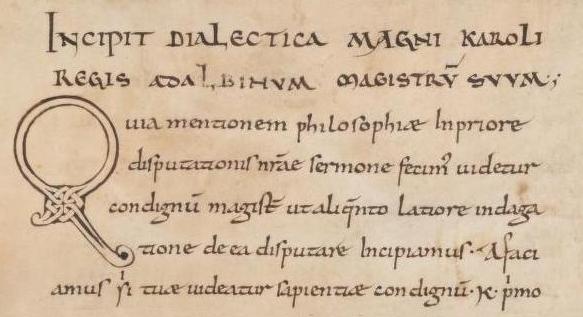
Bede was an inspiration to Albinum Alcuin of Britain, who had a major role in the Carolingian renaissance. Alcuin was invited to Charlemagne's court, where he helped develop a script that became the standard across Charlemagne's realm. The text above is from a dialogue between Charlemagne and Alcuin, and it is written in the Carolingian script that Alcuin fostered. (Parker Library 206, fol. 101r, by permission of the Master and Fellows of Corpus Christi College, Cambridge.)